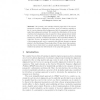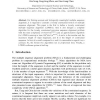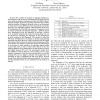146 search results - page 10 / 30 » Segment-Based Scores for Pairwise and Multiple Sequence Alig... |
IDA
2007
Springer
14 years 1 months ago
2007
Springer
We present a new machine learning approach to the inverse parametric sequence alignment problem: given as training examples a set of correct pairwise global alignments, find the p...
CIS
2004
Springer
14 years 1 months ago
2004
Springer
For finding accurate and biologically meaningful multiple sequence alignment, it is required to consider a loosely constrained version of multiple sequence alignment. This paper is...
BIBE
2007
IEEE
14 years 2 months ago
2007
IEEE
Abstract—We consider the problem of aligning multiple protein sequences with the goal of maximizing the SP (Sum-of-Pairs) score, when the number of sequences is large. The QOMA (...
CSB
2005
IEEE
14 years 1 months ago
2005
IEEE
In the initial stage of sequence analysis, a biologist is first faced with the questions about how to choose the best tool to align sequences of interest and how to analyze and v...
WABI
2007
Springer
14 years 1 months ago
2007
Springer
When aligning biological sequences, the choice of parameter values for the alignment scoring function is critical. Small changes in gap penalties, for example, can yield radically ...



